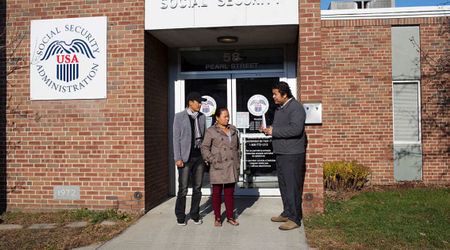Waitress's Brilliant Defense Against Non-Tippers Wins Admirers

In the intricate world of restaurant etiquette, the topic of tipping remains a contentious issue, with varying customs and expectations across different cultures and regions. Recently, a waitress’s firm stance against non-tipping customers has ignited a viral debate, shedding light on the dynamics between service providers and patrons. The incident, captured in a video that garnered widespread attention, featured a waitress named Syd confronting customers who boldly declared their intention not to leave a tip before receiving any service. Syd’s reaction, characterized by her refusal to accommodate the non-tipping patrons in the dining area, has drawn both praise and criticism from viewers.

In the viral video, Syd adeptly navigates the uncomfortable situation by informing the customers that a service charge applies for dining in the restaurant. Rather than passively accepting their declaration of not tipping, she redirects them to place a to-go order, thereby standing up for her right to be recognized for her service.
Social media reactions to Syd’s response have been polarized, reflecting the broader discourse surrounding tipping culture. Supporters commend her for advocating for fair compensation and acknowledging the inherent value of service, while detractors argue that tips should not be mandatory and emphasize the importance of customer service irrespective of tipping practices.
Central to the debate is the role of tipping in the hospitality industry and its implications for workers’ wages. While tipping customs vary globally, tipping remains deeply ingrained in American dining culture, with servers often relying on tips to supplement their income. However, this reliance on gratuities has sparked discussions about wage inequality and the need for systemic changes within the restaurant industry.
Critics of mandatory tipping highlight the responsibility of employers to provide fair wages to their employees, rather than passing the burden onto customers. They contend that tipping perpetuates a flawed system wherein workers' livelihoods are dependent on the generosity of patrons, rather than on equitable compensation from their employers.

Conversely, proponents of tipping argue that it serves as a direct means of acknowledging and rewarding quality service. They contend that tipping incentivizes servers to deliver exceptional experiences and fosters a sense of appreciation for their efforts. However, this perspective often overlooks the disparities in tipping practices and the subjective nature of service quality assessments.

The viral video featuring Syd adds fuel to the ongoing discourse surrounding tipping practices, prompting individuals to reflect on their own beliefs and behaviors regarding gratuities. As tipping remains a deeply ingrained aspect of dining culture, it is essential to consider the broader implications of tipping policies on workers' livelihoods and the dynamics between service providers and consumers.

Ultimately, the debate surrounding tipping extends beyond individual interactions to encompass larger questions of economic justice and labor rights within the hospitality industry. While Syd’s bold stand against non-tippers may have sparked controversy, it catalyzes much-needed conversations about the future of tipping culture and the fair treatment of service workers.
As discussions continue, it is crucial to recognize the complexities inherent in tipping practices and to advocate for solutions that promote equity, dignity, and respect for all individuals working in the service industry. Whether tipping remains a customary practice or undergoes significant reforms, the welfare of workers must remain at the forefront of these deliberations.






















